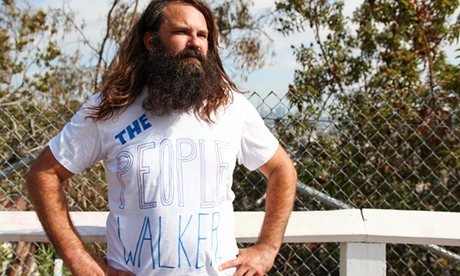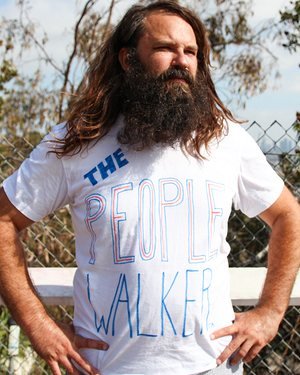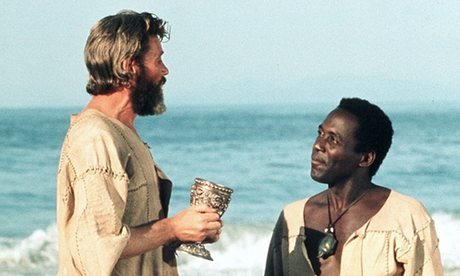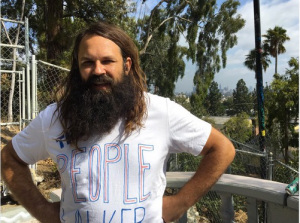Dermott Hayes's Blog: Postcard from a Pigeon, page 41
September 20, 2016
Conor Harrington -Watch Your Palace Fall
Stunning art, by an Irishman, too
Pace London Gallery
15 September – 9 October 2016
Last week saw the opening of Irish-born, London-based Conor Harrington’s solo show ‘Watch Your Palace Fall’ in Pace London’s Soho gallery in collaboration with HENI Publishing.
You might have seen Conor’s work adorning the walls in the streets of London and elsewhere around the world, from New York to Puerto Rico and all over Europe: huge murals depicting Renaissance and military inspired figures, often two of them mid-fight. I first came across his work in Dulwich, at the Dulwich Outdoor Gallery Project during Dulwich Art Week in 2013. Initiated by curator Ingrid Beazley, it featured originally commissioned art works by leading street artist from around the world reimagining classic paintings from Dulwich Picture Gallery. I have since ‘discovered’ his work in Shoreditch, in Whitecross Street, in Fashion Street, in Brick Lane and in Soho.
The exhibition show ten new paintings by…
View original post 209 more words


The Fascinating ’80s Public Access Films Produced by a California UFO Cult
by Ella Morton
September 15, 2016
18,106

Ruth Norman, a.k.a. Archangel Uriel, and some Unariuns dressed up for a psychodrama.

In the early ‘80s, American channel surfers began to encounter some pretty out-there public-access programming from a California collective known as Unarius. Led by a woman named Ruth Norman, a warm and maternal figure who appeared on-screen dressed in a variety of fluffy, sparkly, over-the-top costumes, the videos were known by their creators as psychodramas. The narratives often included aliens, UFOs, and historical settings, and the performers appeared to be making up their lines as they went along.


One of the Earliest Science Fiction Books Was Written in the 1600s by a Duchess
by Natalie Zarrelli

Margaret Cavendish, the Duchess of Newcastle. (Photo: Public Domain)

No one could get into philosophical argument with Lady Margaret Cavendish, Duchess of Newcastle-upon-Tyne, and walk away unchanged. Born in 1623, Cavendish was an outspoken aristocrat who traveled in circles of scientific thinkers, and broke ground on proto-feminism, natural philosophy (the 17th century term for science), and social politics.
In her lifetime, she published 20 books. But amid her poetry and essays, she also published one of the earliest examples of science fiction. In 1666. She named it The Description of a New World, Called the Blazing World.
In the story, a woman is kidnapped by a lovesick merchant sailor, and forced to join him at sea. After a windstorm sends the ship north and kills the men, the woman walks through a portal at the North Pole into a new world: one with stars so bright, midnight could be mistaken for midday. A parallel universe where creatures are sentient, and worm-men, ape-men, fish-men, bird-men and lice-men populate the planet. They speak one language, they worship one god, and they have no wars. She becomes their Empress, and with her otherworldly subjects, she explores natural wonders and questions their observations using science.


SILENCE
Words written but hardly spoken, tell the story of a man who brought his faith to those who would not listen and persecuted, made a show of turning coat while believing that much stronger and with more conviction. Now twenty five years waiting, the story will be told about Silence.
Silence is the name of a book by the Japanese author, Shûsaku Endô and also the name of a new Martin Scorsese film , based on Endô’s book, that has been in development for 25 years.


Native American Activist Winona LaDuke at Standing Rock: It’s Time to Move On from Fossil Fuels

September 12, 2016
Winona LaDukelongtime Native American activist and executive director of the group Honor the Earth.
While Democracy Now! was covering the Standing Rock standoff earlier this month, we spoke to Winona LaDuke, longtime Native American activist and executive director of the group Honor the Earth. She lives and works on the White Earth Reservation in northern Minnesota. She spent years successfully fighting the Sandpiper pipeline, a pipeline similar to Dakota Access. We met her right outside the Red Warrior Camp, where she has set up her tipi. Red Warrior is one of the encampments where thousands of Native Americans representing hundreds of tribes from across the U.S. and Canada are currently resisting the pipeline’s construction.


Loneliness will be the next great moneyspinner – The Guardian
People walking is just the first signs of a growing social illness, loneliness, a topic I’ve touched on with my poem, Social Fretwork.
Emily White
Isolation among young people is increasing, spawning a new industry in companionship. Soon paying for walks, dinners and dates will feel normal

Recent research suggests 18- to 34-year-olds are more likely to suffer from loneliness than those over 55. Photograph: Matthias Ritzmann/Getty Images
Chuck McCarthy, we heard last week, is an LA man who charges a per-mile rate to walk and talk with customers. Billed as a novel form of social interaction, his business is expanding – he now has five assistant walkers – and the service he offers is part of an emerging trend. Like others in what might be called the companionship industry, McCarthy is packaging up social connection into something we can buy.

‘We need human interaction’: meet the LA man who walks people for a living
If you’ve got the money, you can now Rent-a-Friend, pay for cuddles, or dine with strangers. Our reaction to these services tends to vary, in keeping with how intimate they are – cuddle parties seem weirder than dinner parties – but the basic trade-off of cash for connection is the same in each case.
And is there really anything wrong with these services? We applaud befriending and visiting schemes for the elderly but judge a 30-something who might pay for a walk. All of us, though, need social connection. If we support programmes that ensure the elderly have company, why don’t we do the same for the young?
The basic view is that younger people should have the resources to find and create their own friendships and romances. But many younger people are clearly having trouble in this department. The Mental Health Foundation’s Lonely Society report found that 18- to 34-year-olds were more likely to suffer from loneliness than those over 55, and it suggested that loneliness might be having a cohort effect, with younger generations feeling progressively more isolated.
It’s also the case that many of the health effects associated with loneliness are cumulative: if we want to prevent loneliness-related cardiovascular disease among 60-year-olds, we need to start addressing social connection among people in their 20s.

Chuck McCarthy charges per mile to walk with and talk to customers in LA, an example of the growing companionship industry. Photograph: Noah Smith for the Guardian
But we don’t focus on developing social support for younger people. If you’re too old for after-school programmes, too young for a friendly visitor, and not feeling down enough for a helpline, you’re on your own. In this situation, paying for offline company when none is around might start to seem like a viable option.
I’m not in favour of paying for social connection. But I’m also not in favour of people feeling so alone that paying starts to seem reasonable. Younger people are facing enormous social strain right now: there are fewer workplaces that offer steady colleagues, fewer affordable neighbourhoods that offer parks and public spaces, and fewer jobs that offer predictable hours.
And it’s the private market, not government policy, that’s responding to all this stress. The Berkeley university sociologist Arlie Russell Hochschild writes about how – as our lives become more difficult and solitary – it’s the market that’s offering solutions. We can now pay strangers to walk our dogs, care for ageing parents, host birthday parties and tend to family graves.

A literary cure for loneliness
Read more
If we’re prepared to pay for all these services, it’s only a matter of time until paying for connection in the form of walks, coffee dates or dinners starts to seem much more mainstream.
The market shouldn’t be responding to our need for social connection. But it’s hard to criticise the market when there’s so little else in place. It’s true that younger folks can join crowdsourced meet-up events, but those groups often require a degree of social confidence and stamina that many people lack.
It’s also the case that one of the worst effects of loneliness is to make you wary of unstructured social situations. When I was quite lonely in my early 30s, I signed up for a meet-up event at a Toronto art gallery and was so overwhelmed by the gaggle of strangers I saw near the entrance that I cruised right past, pretending not to see them.
The growing market for social connection is proof of unmet social needs. We could crowd the market out through measures that address some of the triggers of loneliness, such as low incomes and unaffordable housing. But we probably won’t.
In a decade or so, paying for connection may seem as ordinary as paying for therapy. The companionship market will make us uncomfortable, and we’ll criticise it, but it will persist. The need for social connection is too primal: if it’s the market that’s offering us the chance to walk and talk with someone who seems like a friend, we’ll be heading towards it, not turning away.


Kat’s Eye #30 – Light and Dark
I favour the darker image, what do you think?
As usual, I had trouble settling on one edit… which do you prefer?



‘Paris, 1928.’ mixed media on paper, 4″ x 6″
Walking the Human
In the paradox of social networks, the more cyber friends we make, the less social we become is apt and what seems novel now – human walking services – will be normal tomorrow.
The Wildsound Poetry festival will post a performance of my poem, Social Fretwork ,soon, please look out for it and give me a ‘like’ or, better still, drop in for a virtual coffee and have a chat.The theme was ‘Society’ and with Californian Chuck McCarthy earning $7 an hour to walk humans, it won’t be long before social skills are being taught as part of the school curriculum. Set an example, now. Be a friend.
My poem, Social Fretwork, has been posted on the Festival for Poetry website – https://festivalforpoetry.com/2016/08... – and the Wildsound festival review site – https://wildsoundfestivalreview.com/2016/08/31/society-poetry-social-fretwork-by-dermott-hayes/ .

People Walker, Chuck McCarthy, $7 an hour
Phone a friend, arrange to meet and have a conversation, even if it’s meaningless.



September 19, 2016
Matin March
Photo credit: www.garethmccormack.com
He was fond of a peregrination; early morning, up with the birds, a solid breakfast of porridge and fresh blueberries, pot of coffee and wholewheat toast, then ablutions and evacuation in the thunderbox before traipsing off on foot, across hill and dale, ramble and perambulate but never call it hike.


Postcard from a Pigeon
- Dermott Hayes's profile
- 4 followers









